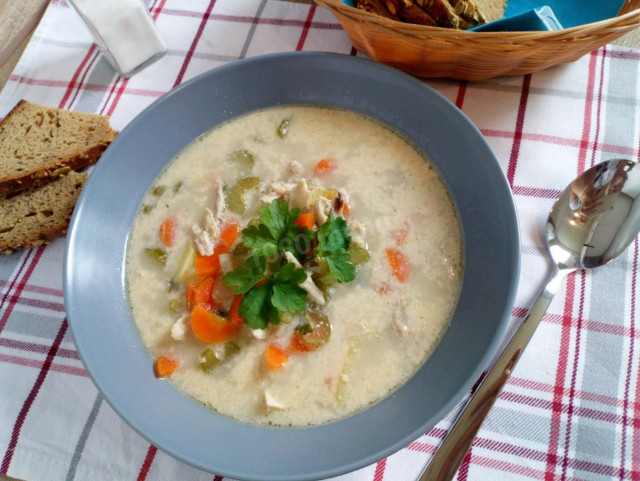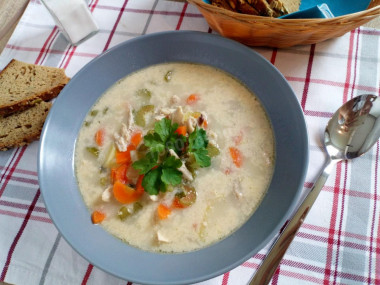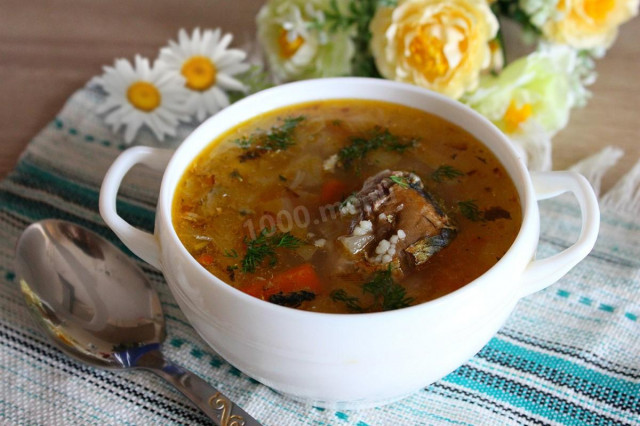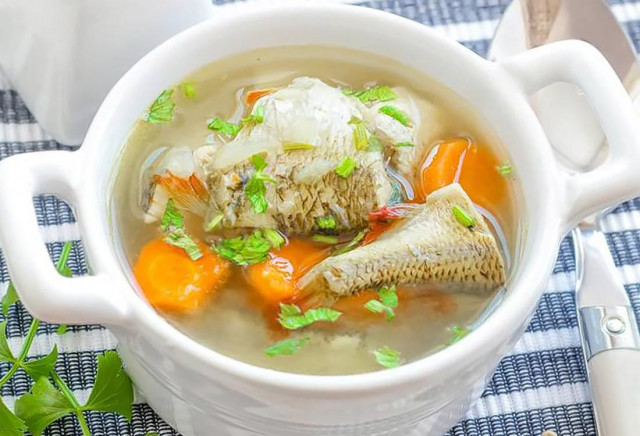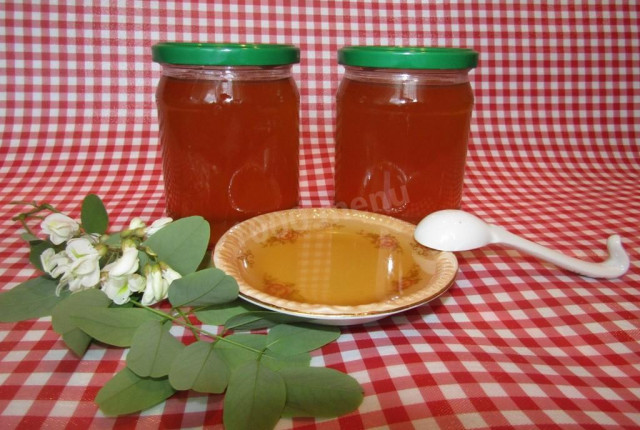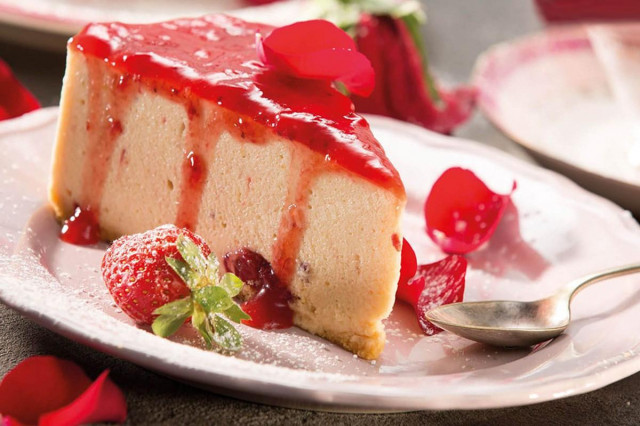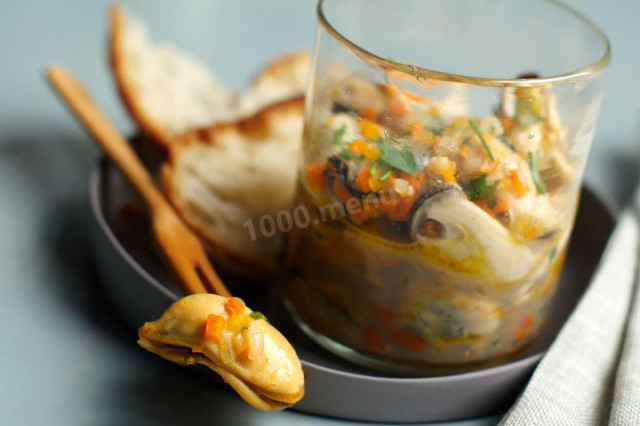Composition / ingredients
Step-by-step cooking
Step 1:
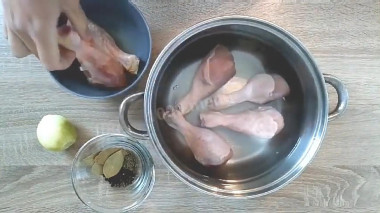
First of all, you need to cook the broth. To do this, take a saucepan, pour about two liters of water into it. We put the whole chicken in the water (you can take any parts of the chicken). One peeled onion. And we also send spices there: dried thyme, bay leaf and a teaspoon of allspice with peas. We put the pan on the fire. Cook over medium heat for about one hour.
Step 2:
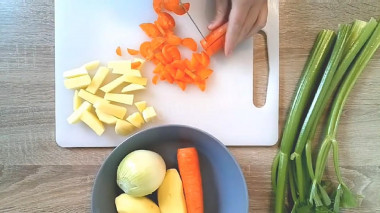
Now vegetables. Potatoes need to be peeled and cut into small pieces. Peel the carrots and cut them into slightly smaller pieces. Peel and finely chop the onion. Celery stalks are also cut into small pieces.
Step 3:
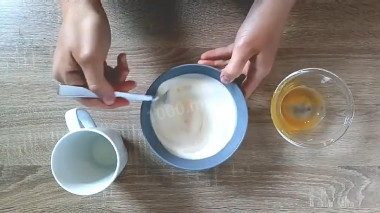
Then cream (cream is better to take thicker and greasy). And mix the egg yolks well. Beat a little with a fork.
Step 4:
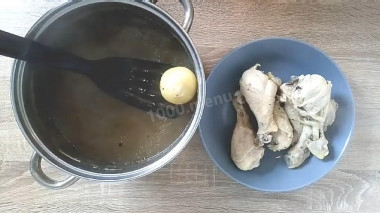
When the broth is cooked, remove from heat. We put the whole chicken out of the pan into a plate and an onion. We won't need the onion anymore.
Step 5:
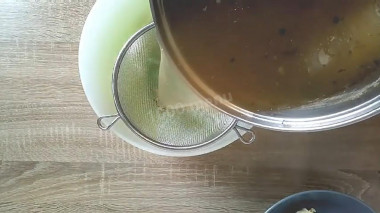
Now the broth will need to be strained through a fine sieve.
Step 6:
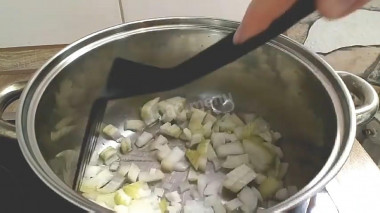
Take a clean saucepan, pour a little vegetable oil into it. Put on the fire, add the onion and fry it for five minutes.
Step 7:
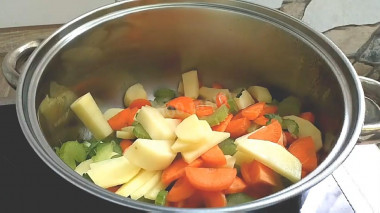
Then add the remaining vegetables: potatoes, celery and carrots. Fill them with super fragrant broth and cook until the potatoes are ready.
Step 8:
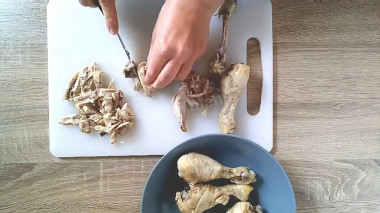
Cool the chicken from the broth a little. Carefully remove all the meat from the bones and cut it into small pieces.
Step 9:
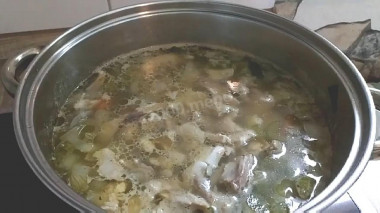
When the vegetables are cooked, they become soft. The soup should be salted to taste and add chopped chicken meat. Mix it up.
Step 10:
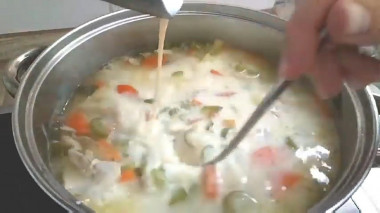
Now, constantly stirring the soup, you need to pour out a thin stream of cream with yolks. We are still mixing well, maybe you will still need to add salt. And cook for another five minutes. And the Belgian soup is ready.
Classic Belgian chowder, a traditional dish of Flanders. Sometimes the name Gentse Waterzooi is also used, which indicates the origin of the dish.
The original recipe includes fish, but nowadays the recipe with chicken meat is more popular. The most plausible theory of such changes is the fact that the rivers of Ghent have become more polluted, and fish have disappeared from them. Another feature of the soup is that the broth is cooked separately.
Caloric content of the products possible in the composition of the dish
- Category I chicken - 238 kcal/100g
- Category II chicken - 159 kcal/100g
- Chicken, flesh without skin - 241 kcal/100g
- Chickens - 140 kcal/100g
- Onion - 41 kcal/100g
- Ripe potatoes - 80 kcal/100g
- Baked potatoes - 70 kcal/100g
- Mashed potatoes - 380 kcal/100g
- Boiled potatoes - 82 kcal/100g
- Potatoes in uniform - 74 kcal/100g
- Fried potatoes - 192 kcal/100g
- Buttermilk - 36 kcal/100g
- Cream of 20 % fat content - 300 kcal/100g
- Cream of 10% fat content - 120 kcal/100g
- Cream - 300 kcal/100g
- Carrots - 33 kcal/100g
- Dried carrots - 275 kcal/100g
- Boiled carrots - 25 kcal/100g
- Bay leaf - 313 kcal/100g
- Thyme - 101 kcal/100g
- Dried thyme - 276 kcal/100g
- Thyme - 276 kcal/100g
- Black pepper peas - 255 kcal/100g
- Salt - 0 kcal/100g
- Egg yolks - 352 kcal/100g
- Celery stalk - 12 kcal/100g

